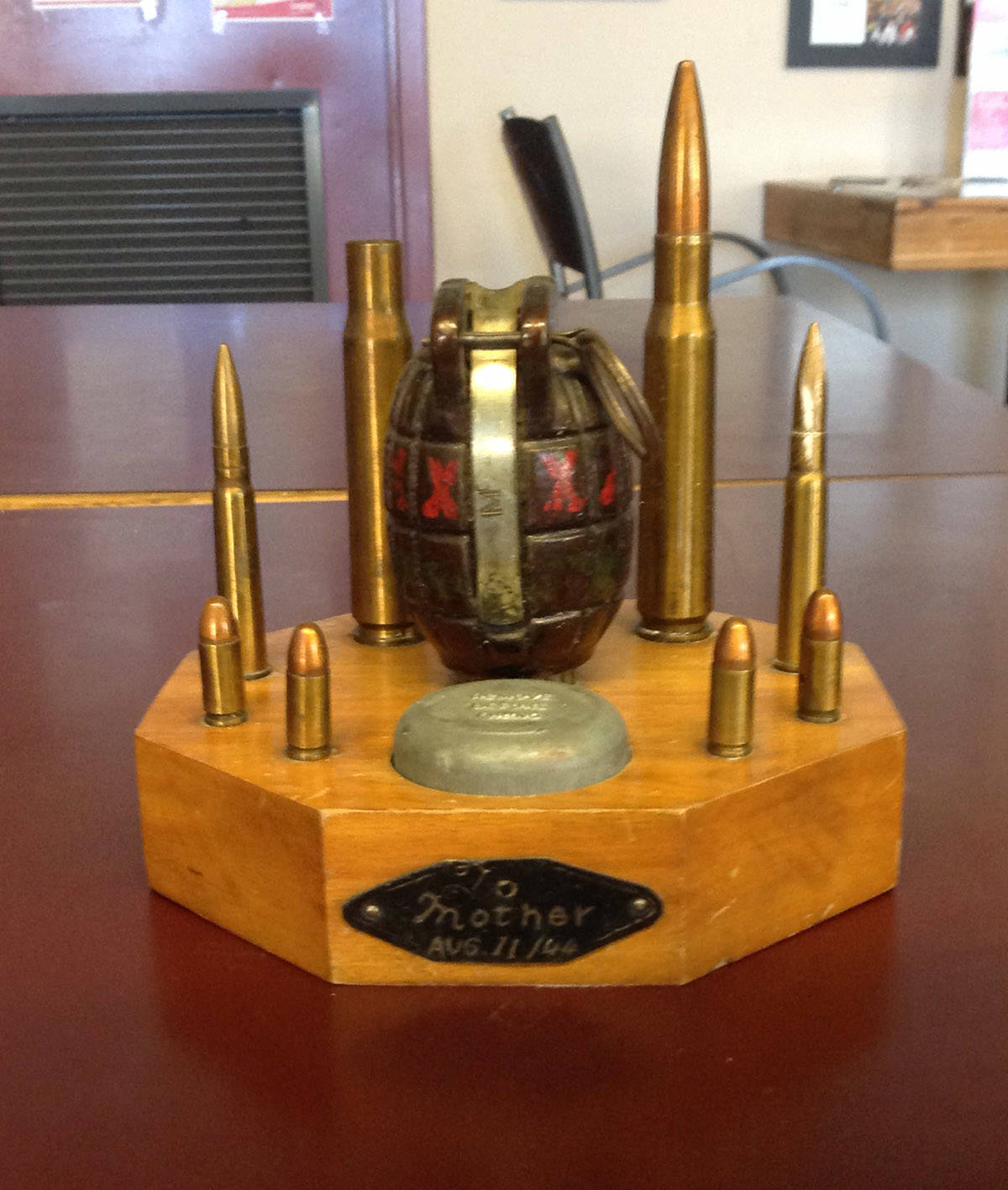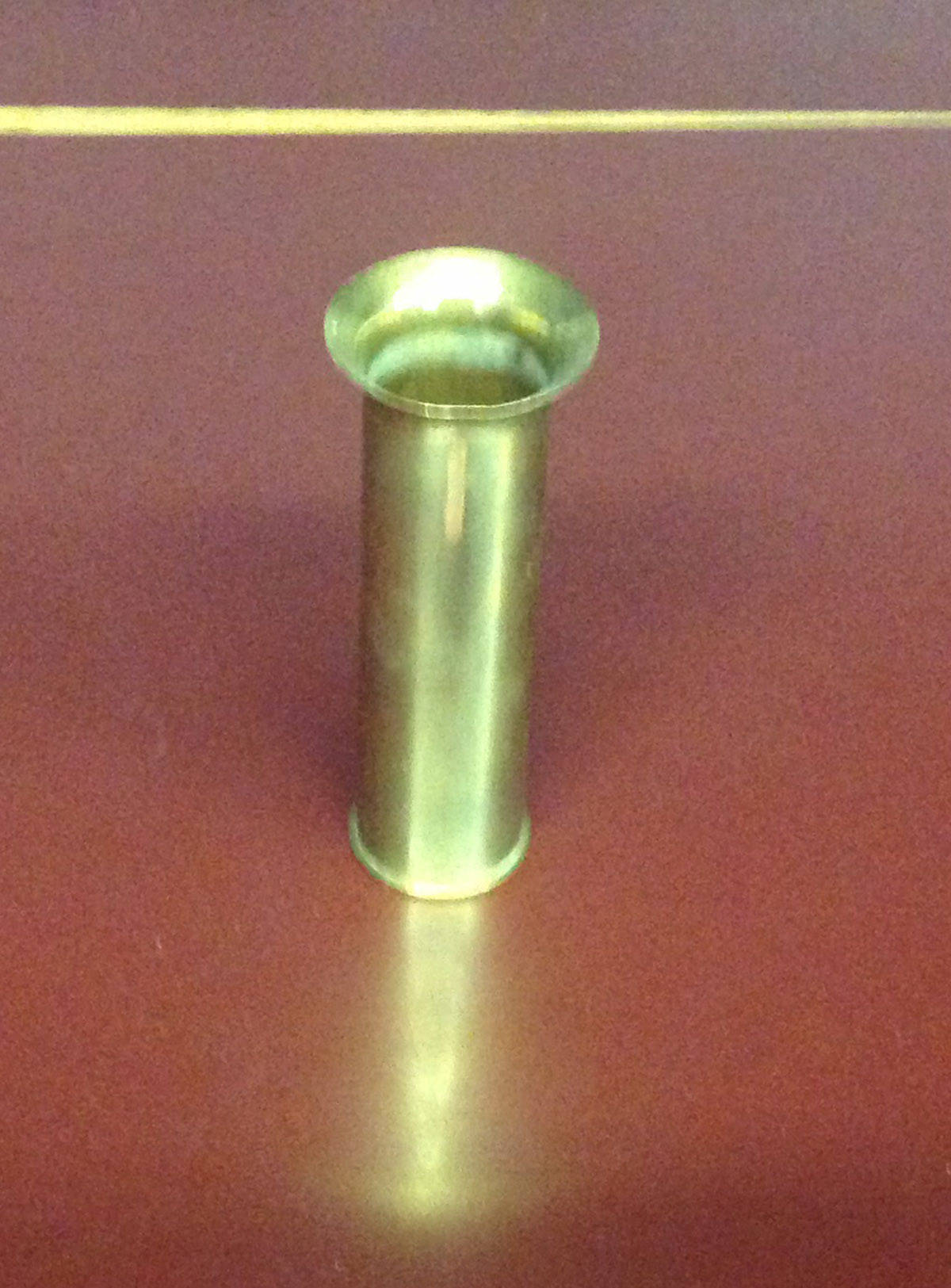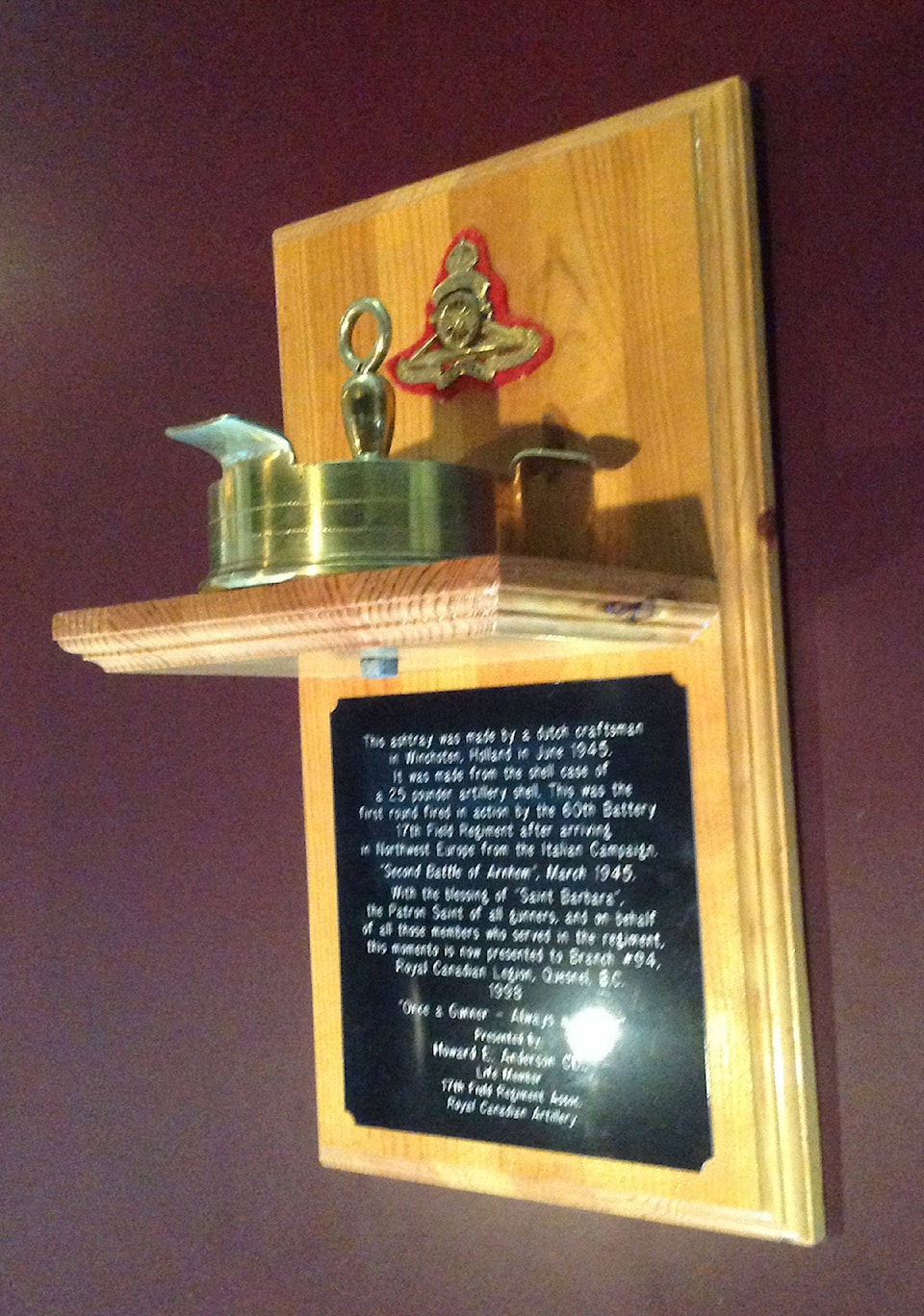You might have heard the term trench art before, but really, what is it?
The history of trench art spans conflicts going back as far as the Napoleonic Wars right up to modern times. The term refers any decorative item crafted by soldiers, prisoners of war and civilians.
It wasn’t so much to express their thoughts about war, but rather using readily available material to occupy idle times, assist with convalescence by therapeutic use of body and mind and as a way of having a souvenir to bring home, or in the case of a civilian, an item to sell.
This form of art can be in the form of a discarded rifle cartridge, shell casing or anything else in abundance.
These were often hammered into different shapes, such as ashtrays and drinking vessels and quite often scribed with names, Regimental crests and battle honours.
Rings were fashioned as well as knives. Brass shells were in great supply and soft enough to be worked without elaborate tools.
Other examples of the art were carved into chalk or clay walls of trenches and tunnels. There are numerous remnants of these carvings visible today in First World War battlefields, such as Vimy Ridge.
One was only limited by his imagination. George Coppard, in his book, With a Machine Gun to Cambrai, tells of a fellow pressing his uniform button into the clay on the floor of his trench. Molten lead from shrapnel was poured into the impression and a replica was cast.
The wounded were encouraged to work at crafts for therapy and prisoners of war spent a great deal of time crafting items. Some items made behind the wire were often traded for food, money or other goods and favours. Many if these items found their way back to Canada while others were found for sale on the streets of towns and villages.
All of the examples listed fall under the broad category of trench art and not strictly applied to artifacts made in the trenches.
Royal Canadian Legion Branch #94 has several interesting examples of trench art in their collection.
One piece that dates back to the First World War is a very intricately etched brass casing. This casing is decorated with a Regimental crest from the 75th, part of the contingent of the Canadian Expeditionary Force (CEF) and has the name of George Johnson across the bottom.
Along its sides are marked with all the battles this unit was involved in. The pictures I have do not do the work proper justice and it would be better viewed in person.
Our other items date from the Second World War with one depicting a very elaborate ash tray that has been mounted on a wood plaque. This was made during the Italian Campaign and donated by a Veteran of that action.
Another is, what I refer to as, a work in progress. A shell casing has been “mushroomed out” at the top but, it seems the work ended there. I like to think the person involved did not complete it as he was, possibly, on his way home.
Our other example is a small collection of small arms ammunition surrounded by grenade, all mounted on a wood base with the inscription “Mother” on a small plate.
I have to wonder what the soldier’s mother would have thought about that. I’m sure she was just happy to have her young man home and safe.
All these items are on display in your local Legion Branch and can be viewed at any time during regular hours. We are quite justly proud of our collection and it is my great pleasure to be looking after these rare items.
Speaking of opening hours, your local Legion is now open later in the evenings Wednesdays, Fridays and Saturdays until 10 p.m.
Lunches are served daily from Tuesday through Saturday with a special Buffet every Friday.
Doug Carey is a member of the Royal Canadian Legion, Quesnel Branch #94 and the branch historian.


